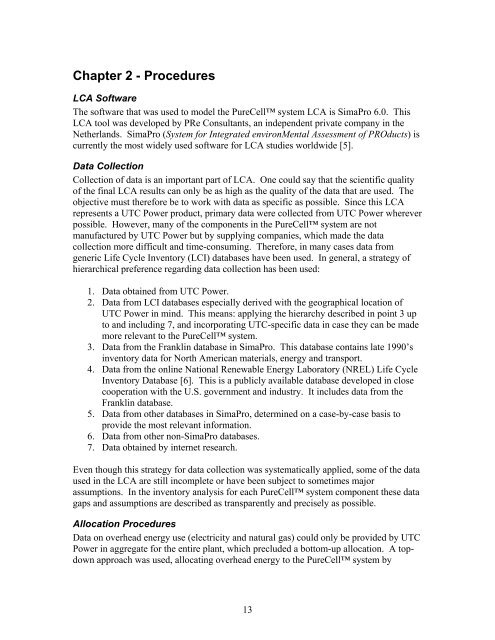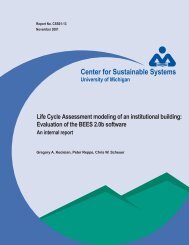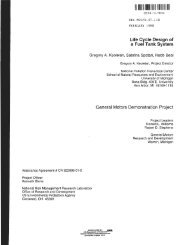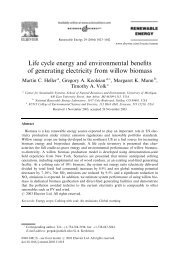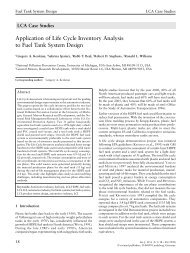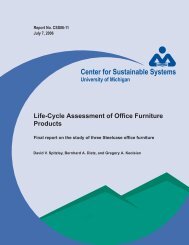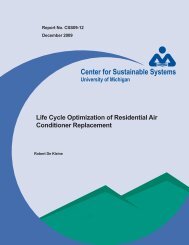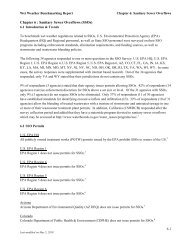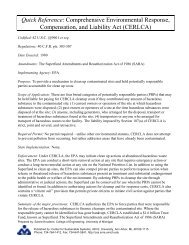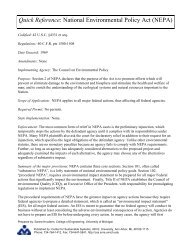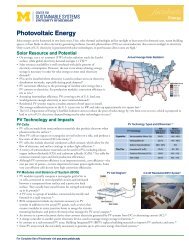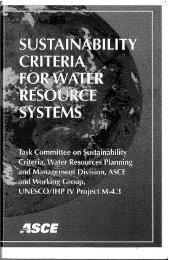A Life Cycle Assessment of the PureCell Stationary Fuel Cell System ...
A Life Cycle Assessment of the PureCell Stationary Fuel Cell System ...
A Life Cycle Assessment of the PureCell Stationary Fuel Cell System ...
- No tags were found...
Create successful ePaper yourself
Turn your PDF publications into a flip-book with our unique Google optimized e-Paper software.
Chapter 2 - Procedures<br />
LCA S<strong>of</strong>tware<br />
The s<strong>of</strong>tware that was used to model <strong>the</strong> <strong>Pure<strong>Cell</strong></strong> system LCA is SimaPro 6.0. This<br />
LCA tool was developed by PRe Consultants, an independent private company in <strong>the</strong><br />
Ne<strong>the</strong>rlands. SimaPro (<strong>System</strong> for Integrated environMental <strong>Assessment</strong> <strong>of</strong> PROducts) is<br />
currently <strong>the</strong> most widely used s<strong>of</strong>tware for LCA studies worldwide [5].<br />
Data Collection<br />
Collection <strong>of</strong> data is an important part <strong>of</strong> LCA. One could say that <strong>the</strong> scientific quality<br />
<strong>of</strong> <strong>the</strong> final LCA results can only be as high as <strong>the</strong> quality <strong>of</strong> <strong>the</strong> data that are used. The<br />
objective must <strong>the</strong>refore be to work with data as specific as possible. Since this LCA<br />
represents a UTC Power product, primary data were collected from UTC Power wherever<br />
possible. However, many <strong>of</strong> <strong>the</strong> components in <strong>the</strong> <strong>Pure<strong>Cell</strong></strong> system are not<br />
manufactured by UTC Power but by supplying companies, which made <strong>the</strong> data<br />
collection more difficult and time-consuming. Therefore, in many cases data from<br />
generic <strong>Life</strong> <strong>Cycle</strong> Inventory (LCI) databases have been used. In general, a strategy <strong>of</strong><br />
hierarchical preference regarding data collection has been used:<br />
1. Data obtained from UTC Power.<br />
2. Data from LCI databases especially derived with <strong>the</strong> geographical location <strong>of</strong><br />
UTC Power in mind. This means: applying <strong>the</strong> hierarchy described in point 3 up<br />
to and including 7, and incorporating UTC-specific data in case <strong>the</strong>y can be made<br />
more relevant to <strong>the</strong> <strong>Pure<strong>Cell</strong></strong> system.<br />
3. Data from <strong>the</strong> Franklin database in SimaPro. This database contains late 1990’s<br />
inventory data for North American materials, energy and transport.<br />
4. Data from <strong>the</strong> online National Renewable Energy Laboratory (NREL) <strong>Life</strong> <strong>Cycle</strong><br />
Inventory Database [6]. This is a publicly available database developed in close<br />
cooperation with <strong>the</strong> U.S. government and industry. It includes data from <strong>the</strong><br />
Franklin database.<br />
5. Data from o<strong>the</strong>r databases in SimaPro, determined on a case-by-case basis to<br />
provide <strong>the</strong> most relevant information.<br />
6. Data from o<strong>the</strong>r non-SimaPro databases.<br />
7. Data obtained by internet research.<br />
Even though this strategy for data collection was systematically applied, some <strong>of</strong> <strong>the</strong> data<br />
used in <strong>the</strong> LCA are still incomplete or have been subject to sometimes major<br />
assumptions. In <strong>the</strong> inventory analysis for each <strong>Pure<strong>Cell</strong></strong> system component <strong>the</strong>se data<br />
gaps and assumptions are described as transparently and precisely as possible.<br />
Allocation Procedures<br />
Data on overhead energy use (electricity and natural gas) could only be provided by UTC<br />
Power in aggregate for <strong>the</strong> entire plant, which precluded a bottom-up allocation. A topdown<br />
approach was used, allocating overhead energy to <strong>the</strong> <strong>Pure<strong>Cell</strong></strong> system by<br />
13


